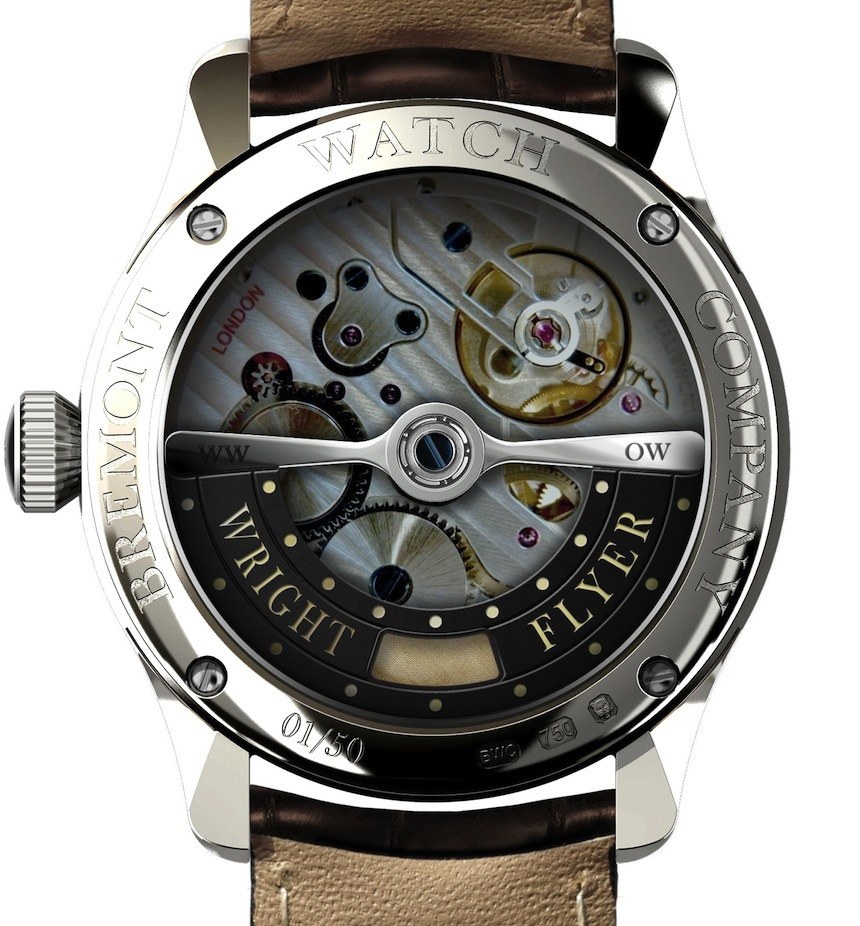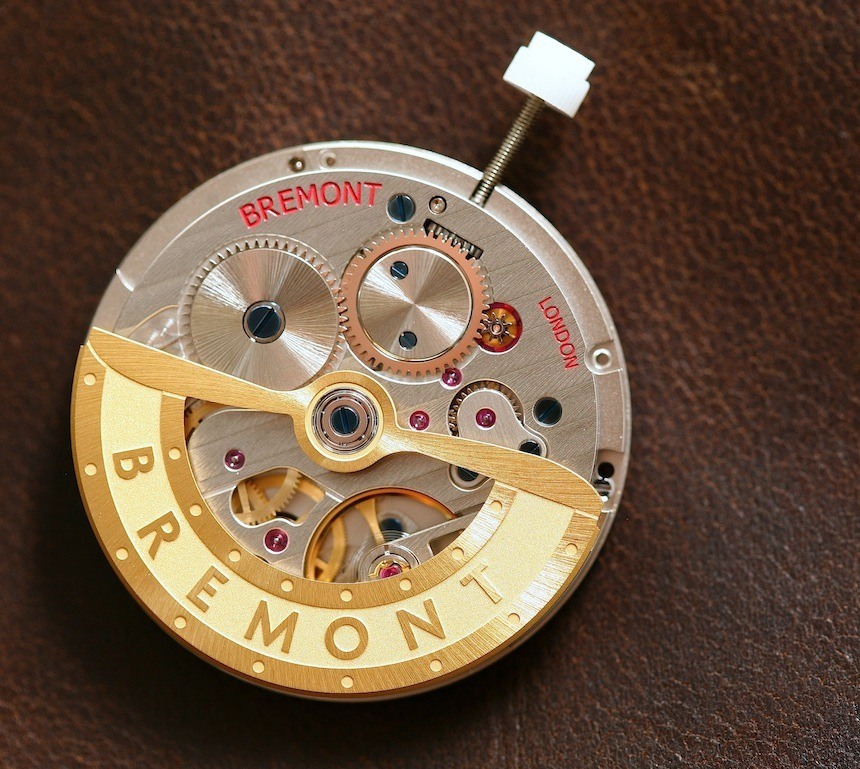
A few days ago on July 23, 2014, Bremont admittedly botched the launch of what is an exciting new product for them – the Wright Flyer that aBlogtoWatch covered here. What happened? Confused facts and efforts by who Bremont claims is a person with an agenda against the brand cast an unfortunate negative light on the release. In addition to the Bremont Wright Flyer being a limited edition timepiece done in collaboration with the Wright family (whose ancestors invented manned-flight in 1903), the Wright Flyer watch was to contain Bremont’s first “in-house movement.” Nothing about the Wright brothers or aviation relationship was at issue, but rather the details about the movement inside of the watch. Bremont not only left out necessary pricing information, but they also failed to mention crucial details about the origins and development partners of the the BWC/01 automatic movement that was signed “London.”
Bremont claims that someone was trying to sabotage the release. When Bremont released news about the Bremont Wright Flyer watch and BWC/01 movement that was purportedly made and developed by them, someone immediately began to compare the movement to those made by Swiss La Joux-Perret. Watch companies often work with specialized companies to produce new movements, so what was the big deal? The issue was that the language used by Bremont was confusing enough that people believed Bremont was suggesting the movement was designed and produced entirely by them in England. The press release says “the BWC/01, designed and developed in Britain.” They however claim that someone who acquired documents about the movement in advance played up information that was not true and attempted to stir a hornets’ nest.
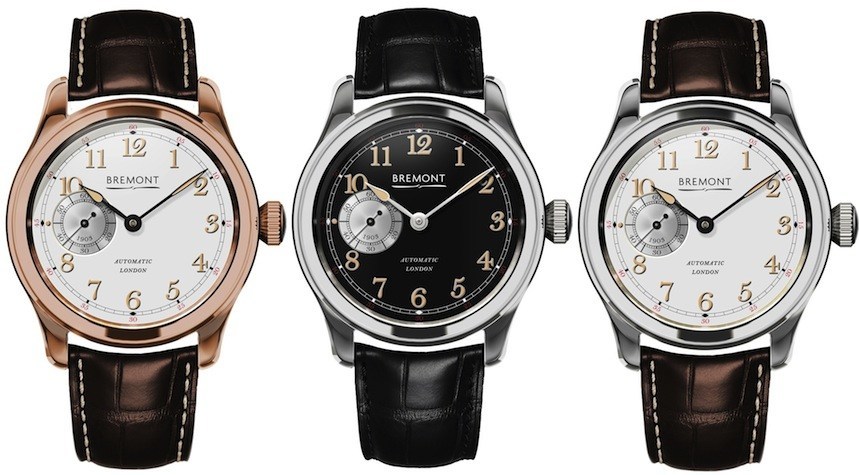
The Bremont Wright Flyer, Bremont’s First Watch Equipped With What The Brand Referred To As Their First In-House Caliber, The BWC/01
A few years ago, a situation occurred that should have once-and-for-all set the rules for how new movements should be released. TAG Heuer released its new “in-house made and developed” Calibre 1887 automatic chronograph movement. Within hours, watch lovers online were comparing the Calibre 1887 to movements made by Seiko in Japan. It looked like TAG Heuer’s new in-house “Swiss Made” movement was Japanese. TAG Heuer’s CEO responded swiftly by explaining that it was a mistake, and that the 1887 movement was in-fact entirely produced by TAG Heuer, but that they had purchased the plans for the base movement from Seiko, made some changes, and produced the movement in Switzerland.
So, while the TAG Heuer Calibre 1887 was technically produced by them, it was not really developed by them. TAG Heuer was heavily criticized for the launch of the 1887 movement because the perception was that they were lying to the consumer – a consumer base so well-organized and educated that very little falsity can get by them for any length of time.
Years later, and the watch industry has not forgotten the important lessons that came out of the Calibre 1887 series of events. We believed that anyone releasing a “new” movement would not make the same mistake. Unfortunately, it happened to Bremont and aBlogtoWatch reached out to communicate with the brand after-the-fact to get the full story.
aBlogtoWatch spoke with Nick English, co-founder of Bremont, last night. Bremont has been working on the production of a fully in-house made movement for years, but producing all the parts necessary to make an entire movement is extremely expensive and complicated for even the biggest brands. We learned that the BWC/01 is a major step in the direction of making in-house movements, but that the project is not done yet.
According to Bremont, someone revealed stolen and confidential details about the BWC/01 movement before the launch of the movement and the Wright Flyer watch. Apparently, the primary motivation behind stealing, then revealing the movement details was to highlight basic similarities between the BWC/01 and another movement manufactured by Swiss movement maker La Joux-Perret under the caliber name 6901. Stolen details or not, the fact remains, and Nick confirmed to us, that Bremont did in fact work with La Joux-Perret on the development of their new movement.
The discussion on the Internet after the launch, was a confusing scenario that caused many people to prematurely judge the situation. In an exhaustive phone conversation with Bremont we discussed the key details of the brand’s first in-house developed movement and feel like we understand the situation. Nevertheless, the fact remains that Bremont released a product with a movement produced by them and La Joux-Perret and they should have been more clear about that in their press release.
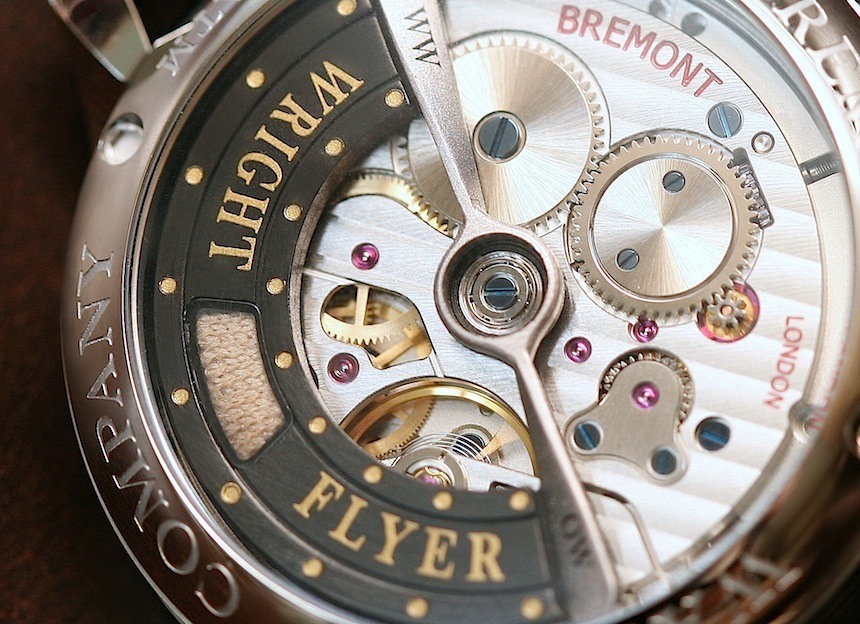
A Detailed Look At The BWC/01 Movement Through The Sapphire Caseback Of The Bremont Wright Flyer Watch
As Nick told us, “We have worked with La Joux-Perret on the movements of some of our previous watches and so was natrual to seek their expertise again. We sat down with La Joux-Perret and said ‘We’d like to develop a movement with you,’ in an effort to create a new movement that is unique to Bremont.” According to Bremont, the result was a close collaboration between the engineers of the brand and La Joux-Perret, and that certain key parts of the movement are purchased from La Joux-Perret while some elements are produced by Bremont in-house. Nick English confirmed that Bremont intended to make the Wright Flyer their first model equipped with a movement that is totally unique to Bremont and produced in part by them. The issue, was that much of the press release language was vague enough to allow people to believe Bremont had designed and produced the BWC/01 movement all by themselves. This assertion was false and Bremont is knowingly guilty of producing a confusing and misleading press release – though we believe their intent was not to deceive when taking the press release into consideration as whole.
Bremont should have been more clear about the circumstances behind the BWC/01 movement. As judgmental as watch lovers are, the only thing they will exclusively not put up with is being lied to or feeling like they were being lied to. Bremont should have been much more straight-forward and confident about their relationship with La Joux-Perret. What is the lesson here? That any and all communicative ambiguities by a company may be taken and expanded to do maximum damage by people with malice or strong emotions who feel as though they have been wronged. The watch industry in 2014, especially with the speed of Internet communication, should be mindful that the withholding of pertinent facts will be deemed to be tantamount to a lie.
Bremont should have indicated that they worked with La Joux-Perret, a prestigious Swiss company, on the development of a unique and exclusive movement for Bremont that would be partially produced by Bremont in London. Failure to disclose the partnership was the major issue, a side-effect of luxury brands today wishing to appear that they do everything in-house. Even huge companies such as Patek Philippe and Rolex use outside suppliers for certain movement parts and watch components.
The BWC/01 movement is part of a greater goal behind Bremont’s larger aspiration – or as Nick put it, the brand’s “holy grail” – which is to be able to produce a movement in the foreseeable future that is entirely manufactured in the UK. The role of the BWC/01 movement in this immensely challenging undertaking is to serve as the first step down this long road that would ultimately lead the brand to its first fully British manufactured caliber. Those with their hands firmly planted on the pulse of the watch industry will know that producing a brand new, fully in-house conceived and manufactured movement is a borderline impossible feat even for the largest and most powerful brands in the industry. Regardless of the “heft” of a company and its financial abilities, establishing a movement manufacturing facility takes several years and necessitates vast financial investments that are unattainable for the absolute majority of watch brands on the market today.
Again, to overcome these issues, Bremont reached out to La Joux-Perret in La Chaux-de-Fonds, Switzerland, a high-end movement manufacturer that is also home for Arnold & Son. Given that Bremont has collaborated with La Joux-Perret before – specifically for their Codebreaker and HMS Victory pieces – it was natural for Bremont to approach La Joux-Perret (LJP) and ask them to co-operate with the engineers of Bremont in developing a new movement that was to be unique for the British brand.
The relationship with La Joux-Perret came to fruition with the BWC/01, which as a design, remains exclusive to Bremont. Nick English confirmed that the movement is built around a successful going-train configuration by La Joux-Perret that is used in other base movements of the manufacturer. The going train is the arrangement of wheels and pinions that transfers the energy of the mainspring to the escapement. The primary reason for this decision, beyond optimizing the cost of the development and production of the new movement, is linked to the reliability and durability of this crucial movement part.
Several major and smaller manufacturers have used for their new in-house movements tried and tested going-train layouts, “lifted” from other comparable movements that have been on the market for decades. This is quite common, and watch lovers know this. From a more technical point of view, changing the layout of these parts offers little-to-no actual benefit to the wearer, beyond updated and different aesthetics. All of this is OK, but the issue remains that Bremont should have been more straight-forward in communicating these facts.
Once again, whether or not there was a theft of movement schematics from Bremont many people quickly spotted the similarity between the BWC/01 caliber and a movement used by Arnold & Son in their DSTB watch. The movements in both the Bremont and the Arnold & Son watches are built around the same base La Joux-Perret mechanism with the same going train configuration. Furthermore, there are some considerable differences between the two movements that Bremont points out.
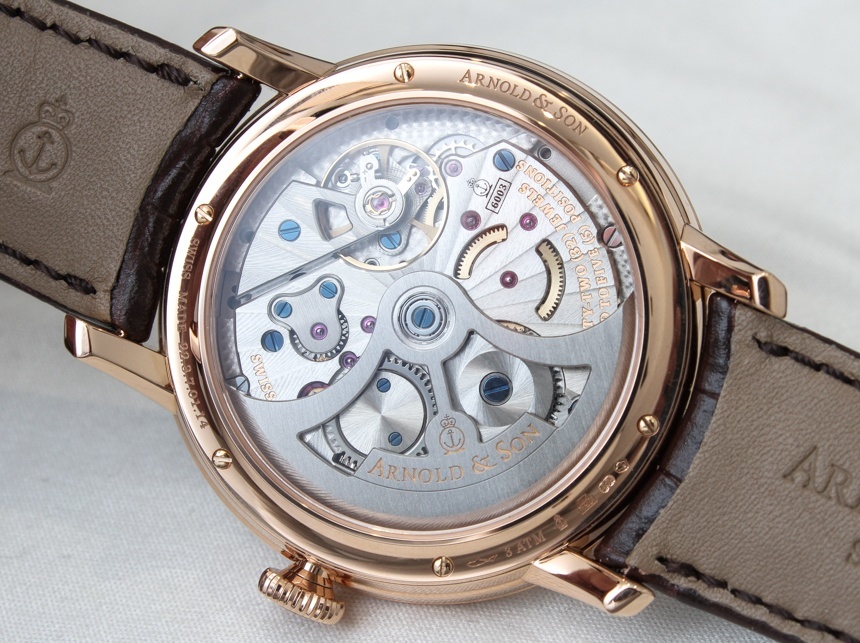
The Arnold & Son DSTB Watch With The Same Base Movement And Going Train Configuration Found In The BWC/01 Movement Of Bremont
First, the DSTB watch features a dead seconds complication with a ticking seconds hand and an off-centered subdial for the indication of the time, which is a considerable modification over the seconds sub-dial and central hour and minute hands of the Wright Flyer. More importantly, as we have noted in our original article about the piece, the Bremont BWC/01 movement is in part manufactured in the UK at the Henley-on-Thames Bremont manufacture location. Currently, Bremont makes their own bridges and mainplates, and plans on gradually extending their operations to involve the crafting of other key components in the near future.
Nick English told us that it is an ongoing process that requires several millions of dollars worth investment and is extremely important to Bremont as they strive to become a more vertically integrated manufacturer. Ultimately, Bremont wishes to make a movement from scratch to finish in the UK, consequently bringing watch manufacturing of this level back to this once-prospering watch making region.
So, is the BWC/01 a movement that is completely manufactured in-house by Bremont? No, and technically speaking, Bremont didn’t say it was. Nevertheless, the language was admittedly not clear and the relationship with La Joux-Perret should have been stated with clarity. When anyone is asked to spend $5,000 – $10,000 (or more as is the case with the Bremont Wright Flyer watches) on a product, they should be given accurate and straight-forward information. It is common for manufacturers of all kinds to obfuscate information and want to appear as though they did everything themselves. We understand that, but given the incredibly close and detail-oriented nature of the watch industry no new product release should be done without considering “what people are going to find out.”
In the aBlogtoWatch article debuting the Bremont Wright Flyer, James Stacey wrote “the movement is signed “London” and many of its components are manufactured at Bremont HQ in Henley-on-Thames, England.” This remains true and we hope that Bremont will be more careful moving forward in regard to how they communicate about their novel products and accomplishments moving forward. The goal of producing a fully British movement is interesting, and if anyone can help design one that can be produced in any volume (as opposed to the lovely one-of-a-kind creations by Roger Smith) it is perhaps Bremont.
The truth is that Bremont is not alone in being unclear about its “in-house movements” and who they work with. What is unique to Bremont is how closely followed they are by the watch collector community, and that they serve as a role model for many upcoming brands who would love to achieve the success of Bremont. As a role model, they admit to making a mistake in the launch of the BWC/01 movement and we hope that moving forward they will have a better grasp of how to go about what is honestly a rather complex and delicate type of product launch. We look forward to seeing one of the Wright Flyer watches soon and hearing more about Bremont’s developing in-house production capabilities. bremont.com


